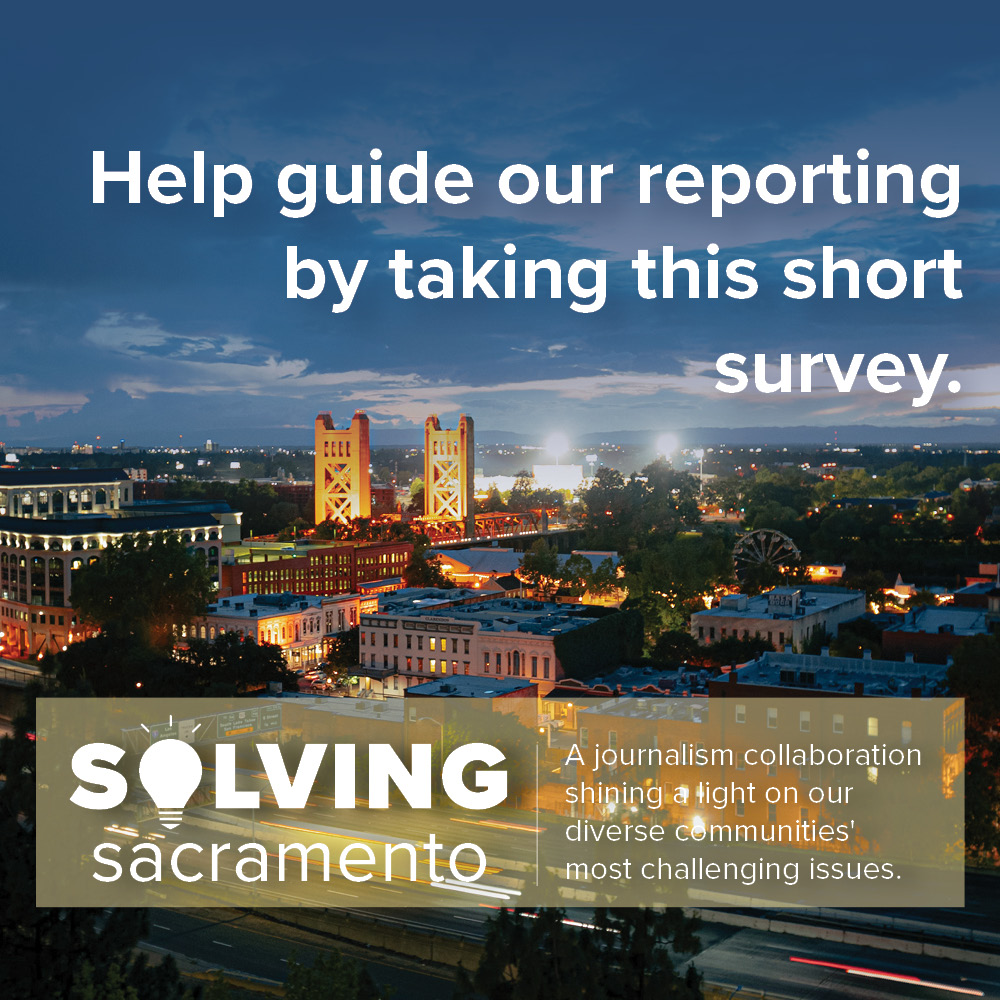Valley Vision’s inaugural Livability Summit highlights stark numbers, trends — but also potential solutions
By Graham Womack
Immediately following the conclusion of Valley Vision’s first Livability Summit on Oct. 4, the civic-leadership organization’s CEO Evan Schmidt expressed excitement.
For the preceding six hours in a ballroom at California State University, Sacramento, a who’s-who of elected officials, such as Rep. Ami Bera (D-Elk Grove) and other policymakers and stakeholders, had gathered for a day focused on improving the wellness of residents around the Sacramento region — and acknowledging some stark truths.
“Just having all these people in the room alone was enough,” Schmidt said. “But then the ideas that people brought, the level of engagement of the audience around the table, the quality of speakers, I was just really excited by the whole thing.”
But it remains to be seen how the roughly 315 people in attendance will take the information from the summit back to their communities and use it to improve quality of life at a time many in the region are struggling, as shown by the results of the new Valley Vision’s Livability Poll, which was highlighted during the event.
The summit kicked off, inadvertently, with a major symbol of why so many have struggled in the past two years. Scheduled opening remarks by Sacramento State President Robert S. Nelsen couldn’t be given since he was “a little under the weather because of COVID,” said the speaker in his place, Los Rios Community College District Chancellor Brian King.
Soon after opening remarks, Schmidt presented results of the just-released Livability Poll, fielded in June and July with 1,887 respondents. She told attendees, “The data that we got back from this poll was very disheartening.”
Among the findings of the poll, 30 percent of residents said they either couldn’t or could barely afford an adequate food supply, 52 percent said they’d felt depression or hopelessness in the past week, and 81 percent said they’d felt stress or anxiety in that time period. In terms of housing, residents ranked its cost as their second-highest concern behind homelessness. Twenty-eight percent of residents also rated the Sacramento region as a poor place to purchase a home.
Kevin Daniel, a community outreach and strategic partnerships analyst for the City of Sacramento, later said people should read the report. “I know sometimes nowadays facts don’t mean a lot. But people [have] got to read and hopefully come to a conclusion that there is something going on and we got to find some solutions.”
Also during the summit, Sacramento Area Council of Governments Deputy Executive Director Kacey Lizon led a panel with Sacramento City Councilman Rick Jennings, Placer County Supervisor Bonnie Gore and Unseen Heroes Founder Roshaun Davis that looked at how to create more housing to ease the region’s housing crisis.
Gore told the crowd that Placer County was “working really hard” to become pro-housing and that code changes were now allowing mixed-used development. Jennings noted how Sacramento had become the first jurisdiction in the state to receive a pro-housing designation by the California Department of Housing and Community Development.
Davis told the crowd about helping to redevelop Oak Park, but missing out on homeownership there. Gentrification and other factors have led to steeply increasing home prices for the neighborhood. He mentioned prices being around $150,000 in the early 2010s, when he first considered buying in the area, compared to about $800,000 now. “For us, nine years ago being there, people told us to buy a house,” Davis, who is Black, told the crowd. “We didn’t even understand why.”
Similar stories for other people of color aren’t uncommon, with data from both Valley Vision’s poll and a San Francisco Planning and Urban Research Association (SPUR) study published last year highlighting disproportionate impacts for Black residents.
“Housing insecurity is a designed outcome,” SPUR CEO Alicia John-Baptiste told the audience. “The fact that it is worse for our Black and African American residents is a designed outcome. Nothing in these poll results is surprising.”
There was also a panel on one of the most glaring current crises in the Sacramento region, homelessness, with Schmidt telling the crowd, “We have about 30 minutes to talk about an issue we could easily talk about all day.”
Already, the summit had highlighted that the number of people experiencing homelessness in Sacramento County almost doubled between 2019 and 2022. Some of the discussion centered on homelessness along the American River Parkway, where county leaders recently took action to break up camping sites. Panelists didn’t necessarily seem to think the county’s approach was sufficient.
“It’s one thing to move people off the parkway,” WellSpace Health CEO Dr. Jonathan Porteus told attendees. “It’s another to bring them to a home.”
Lisa Bates, CEO of homeless services provider Sacramento Steps Forward, later said she thought the summit was great. “I think that these are very critical issues for our community and we need to have forums where we can come together and begin to talk about them. I’m really looking forward to how we can take this to the next level.”
Schmidt said Valley Vision intends to make this an annual event. SACOG Executive Director James Corless said after the event that his organization, which had about two-dozen board members or staffers in attendance, was likely to keep supporting it and that he was pleased with how the day went.
“I’m confident that people are leaving here inspired,” Corless said. “I’m confident that the local elected leaders and elsewhere in local government want to try to address the problem of housing unaffordability, lack of housing, and homelessness. I think we’re going to have to work really hard to figure out those solutions. … If they were easy, we would’ve done ‘em by now.”
This story is a part of the Solving Sacramento journalism collaborative. In 2022, we are focusing on finding solutions to the lack of affordable housing in the Sacramento region. Solving Sacramento is a project of the Local Media Foundation with support from the Solutions Journalism Network. Our partners include California Groundbreakers, Capital Public Radio, Outword, Russian America Media, Sacramento Business Journal, Sacramento News & Review, Sacramento Observer and Univision 19.



Everybody has ideas to improve Sacramento.
Sacramento city ,county, and SACOG have killed many traffic improvements over the years, worsening quality of life a good bit: not replacing the ‘CapCityFrwy’, no Arden Way bridge (would have lessened traffic on Sunrise and Watt Aves), cancellation of the Florin Road bridge to WestSac, etc. The Yolo causeway is 30 years out of date. No peripheral freeway (even Reno has McCarran Blvd!). All this could be mitigated by synchronizing the traffic lights on the more important roads- but our enlightened rulers seem blind to such an idea.
Ronald Reagan did us no favors with the elimination of the state hospital system, where some of the homeless population (those brain-damaged from drugs or significant mental illness) would reside. I wish Newsom would start constructing a new system for caring for these folk.
Many others have been wiped out financially, or have income too low for lodging and medications. Fairly simple, contruction of gated tracts of concrete small studio units (250 sq.ft.) close to shopping and transit. The units would need destruction-resistant amenities. Also a centralized heating and cooling system ducting to all units! Each such township would need a couple people trained in mental health/crisis handling and law enforcement, residing there 24/7.
Just my .02 cents worth.